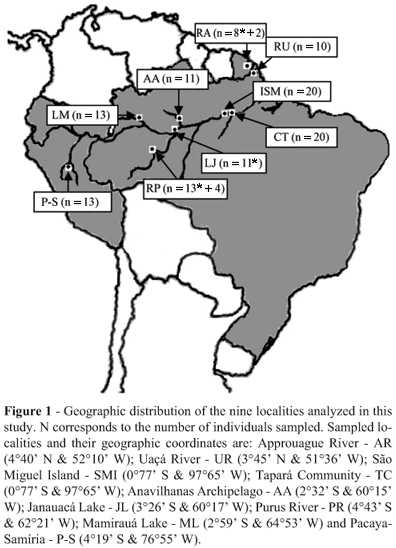The genetic structure of Caiman crocodilus was investigated using a 1085 bp mtDNA fragment of the cytochrome b gene. Inferences were based on 125 individuals from nine localities in Peru, Brazil and French Guiana. With the exception of Mamirauá Lake, Anavilhanas Archipelago and the Tapará Community which show a signal of demographic expansion, the sampled localities are in a mutation-drift genetic equilibrium. Divergence between the Amazon basin and extra-Amazon basin localities is significant; however, inference from Nested Clade Analysis cannot distinguish between continuous range expansion, long distance colonization or past fragmentation; however, past fragmentation is unlikely due to low number of mutational steps separating these two regions. The divergence is probably maintained by the reduced ability of C. crocodilus to cross salt water barriers. Within the Amazon basin, continuous range expansion without isolation-by-distance is the most likely process causing genetic structuring. The observed genetic patterns are compatible with the ecology of C. crocodilus, and history of human exploitation. As commercial hunting depleted more valuable species, C. crocodilus expanded its range and ecological niche, prompting hunters to harvest it. Following a period of intense hunting, C. crocodilus is now experiencing recovery and a second population expansion especially in protected areas.
genetic structure; phylogeography; genetic diversity; demographic expansion; cytochrome b; Caiman crocodilus








